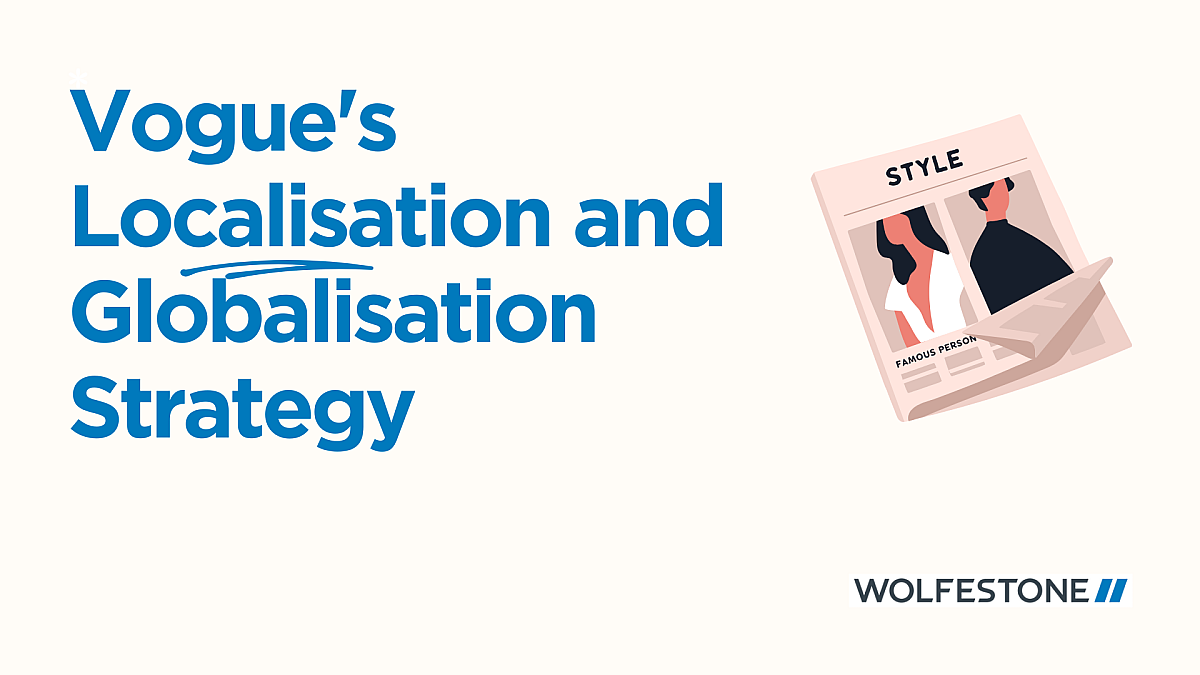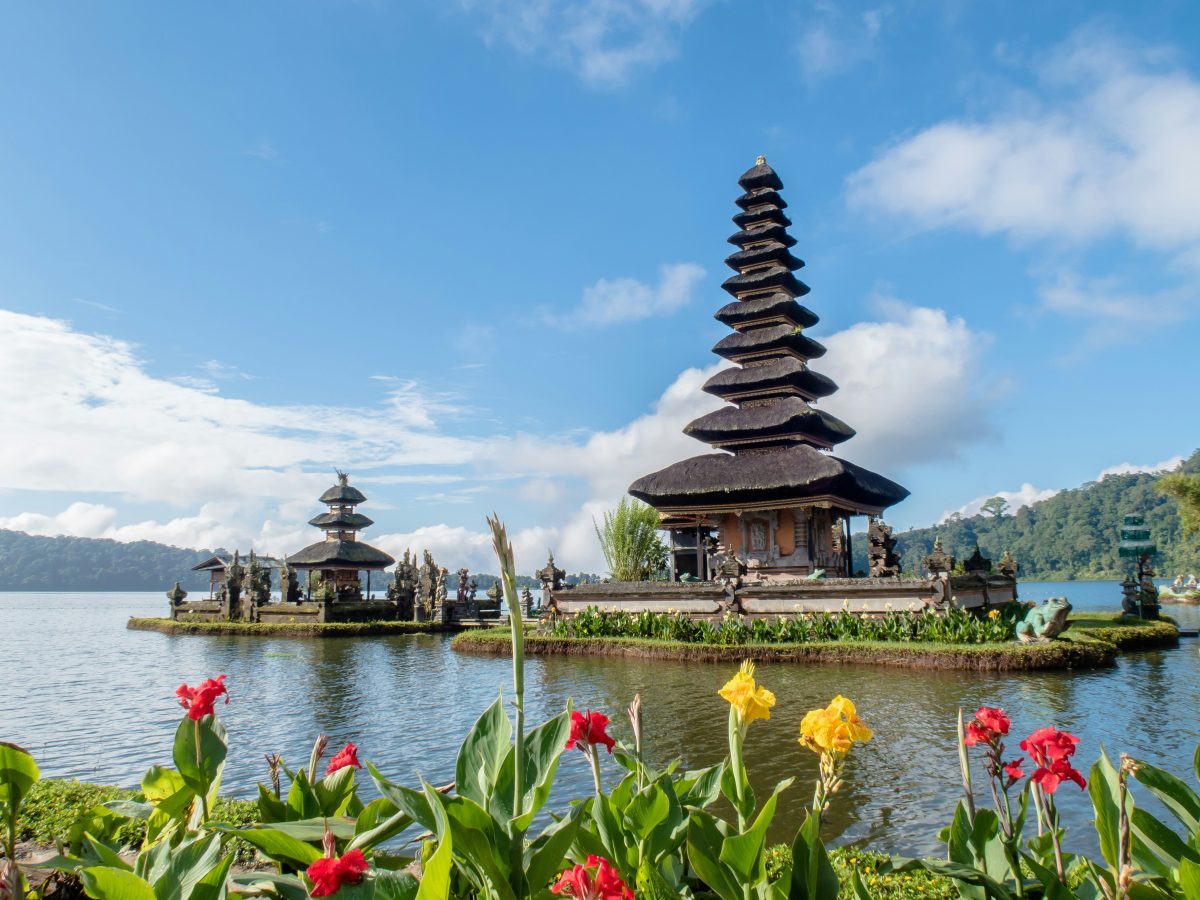𝘈𝘱𝘱𝘳𝘰𝘹 𝘳𝘦𝘢𝘥 𝘵𝘪𝘮𝘦: 9 𝘮𝘪𝘯𝘴🕒
Going global is a priority for many companies, and leading fashion magazine Vogue certainly has this aspect covered.
Reaching millions of affluent fashion and beauty enthusiasts across the globe, the magazine covers style news from haute couture fashion to all things beauty, culture and lifestyle.
Vogue is the ultimate fashion bible, offering a glimpse into the thrilling world of runway and editorial. Featuring iconic cover stars from Madonna to Beyonce, Vogue’s always innovating as it continuously expands, bringing its luxurious, high-fashion branding worldwide.
The magazine’s international success boasts a seamless localisation strategy that honours and understands diverse cultural markets.
How does Vogue do this? By adapting, translating and localising its marketing messages, content and designs and cleverly using social media, Vogue further connects with its global audience.
In this blog, we will cover:
- Vogue going international
- Vogue's globalisation and localisation strategy
- Vogue Arabia case study
- And more
Some history behind the brand we all know and love…
Starting out as a weekly newspaper in December 1892, Arthur Baldwin Turnure founded Vogue, initially appealing to the interests of upper-class New York City.
Years of dedication and a tailored strategy have paved the way for Vogue’s extensive reach and loyal audience. The magazine not only mirrors the evolving nature of fashion but also sets undeniable trends that resonate across continents, where it showcases diverse styles across its international editions.
Naturally, fashion trends are heavily influenced by a variety of factors, including celebrities, influencers, different cultures and traditions.
However, given the competitive nature of the fashion industry and the emergence of new designers unveiling glamorous collections, it can be challenging to keep track of the next big thing.
The globalisation of Vogue has been a total success in celebrating various trends from clothing to aesthetics – all of which stems from a masterful localisation strategy that adapts the iconic brand to meet the specific requirements of each country it enters.
Exploring international editions
As part of its globalisation strategy, Vogue boasts an impressive 28 international editions.
Eleven of these editions are published by global mass media company Condé Nast (British Vogue, Vogue India, Vogue France, Vogue Deutsch, Vogue España, Vogue China, Vogue Arabia, Vogue Italia, Vogue Taiwan, Vogue México y Latinoamérica, and Vogue Japan) and the remaining 17 editions published as licenses of Vogue.
British Vogue was first published in 1916 headed by British fashion designer, Elspeth Champcommunal. Since then, other versions shortly followed in Italy, Spain and then France in 1920 – with the French edition becoming an immediate success thanks to Paris's lively and artistic magazine scene.
Each edition is thoughtfully crafted and localised for its respective market, featuring unique articles and editorials that resonate with local readers.
For example, Vogue India beautifully reflects traditional textiles and attire with a high-end feel, all while highlighting local designers across each of its platforms.
Vogue China, published in Chinese, made its debut back in September 2005 and quickly became the sixteenth edition of the Vogue brand. After two years of development, it was an instant success, with all 300,000 copies selling out upon release.
Transforming how Vogue China was viewed and localising the overall style of the magazine was Margaret Zhang, who focused on creating covers that were more artistic and conceptual – moving away from a solely commercial approach.
Launched in 1980, Vogue México y Latinoamérica is the Spanish language edition and offshoot of the iconic American fashion magazine, specifically localised for Mexico and Latin America. As part of Vogue’s broader localisation strategy, this edition goes beyond simple translation – it shares fashion content, beauty trends and editorial perspectives that resonate with its Latin American audiences.
Globalisation strategy: How did Vogue come to be what it is today?
Editor-in-chief, Anna Wintour, has been a key figure on the magazine’s journey to becoming a global success ever since 1988.
With a focus on diverse models, international collaborations and more meaningful articles, Vogue’s reach has been able to expand far beyond its Western origins, leading to greater global content sharing.
Ever since, new editors from Vogue’s various international editions have been promoting a blend of global and local content to audiences in Europe, Asia and beyond.
“Each market should be focused on how they interpret global themes through their diverse cultures.”
Case study: Vogue Arabia
One of the most recent localised editions of Vogue is Vogue Arabia, which became the 22nd edition after it was published in 2017.
Before its debut print, Vogue Arabia was first launched digitally, becoming the first international edition of Vogue to prioritise digital media rather than traditional print. The initial launch showcased the significant changes that were happening in consumption and technological advancements in the 21st century.
Vogue Arabia, published in English and Arabic, is changing the game in fashion, beauty and culture in the Arab world by bringing audiences fresh narratives, strong colours and bolder designs – targeting the Middle East’s interests, with most of its audience coming from Saudi Arabia. The editorial team designs the covers to be especially striking and regionally impactful, such as December 2024’s edition featuring Lebanese musician and icon Najwa Karam.
Instead of being a direct translation of other Vogue editions, Vogue Arabia is a localised and globalised adaptation. It carefully tailors its content to resonate with the cultural values, traditions and aspirations of its audience, while maintaining the brand’s global standards and prestige.
This approach ensures that the magazine not only reflects regional identity but also connects with a broader international readership, blending local relevance with global branding.
What is Vogue’s localisation strategy?
Localisation is a crucial aspect of any effective brand strategy, involving changing a products, services and content to fulfil the specific needs of a particular market.
For Vogue, this goes beyond simply translating materials into different languages; it requires a keen understanding of the distinct preferences and tastes of each market. So, effective localisation enables Vogue to build stronger connections with its target audiences.
Why is localisation so important for a brand like Vogue? Firstly, tastes and preferences can vary dramatically across different regions. What’s trending in one country can be perceived as outdated or unappealing in another. Therefore, it’s essential to have a grasp of the local market before launching or publishing content (Vogue’s magazines are also physical products).
Vogue’s gradual expansion has led to taking over the fashion industry – but what is the localisation strategy that allows the brand to seamlessly enter new markets?
Understanding of cultural differences
Vogue understands how important it is to know the market it's stepping into. Vogue makes sure its content, whether it's in print, digital or on social media, aligns with local tastes and expectations by customising the content, marketing messages and cover designs.
Transcreation
Transcreation is the process of adapting your content to fit the local culture and language, without losing its original tone and essence. Vogue’s localisation strategy goes beyond translation by determining exactly what to localise, such as making editorial adjustments or adapting advertisements.
Investing in original local content and influencers
Vogue produces original content tailored to each market to enhance its brand appeal and there are considerable differences in how images are used in each edition.
For example, each international edition of Vogue ensures its cover stories and visuals align with the cultural narratives, such as featuring prominent figures from celebrities to royals, to establish a deeper emotional connection with its readers.
Beyond its innovative cover stories, the magazines' internal content is also adapted to feature renowned local designers, artists and support for cultural industry events. Through switching out its media, text, designs and images, Vogue can grab the audience’s attention with its usual engaging material, but now relevant to that specific region.
Working closely with photographers, models, and designers who can embrace the unique style of different markets editions is a powerful localisation strategy for Vogue.
Conduct thorough market research
Market research is key to an effective localisation and globalisation strategy.
Understanding local markets through detailed global market research is crucial because strategies that work well in one region may not be successful in another. Successful strategies from other markets can serve as inspiration, but they must always be adapted to the local context for effectiveness.
Global marketing and social media strategy
In a world where globalisation and localisation are key to having a successful business, it’s important for brands to maintain an authentic stance whilst adapting to change. Vogue is a prime example of how to achieve this balance, offering a comprehensive understanding of the dynamics of globalisation and localisation in regard to global marketing and social media.
Collaboration
Vogue Arabia demonstrates this approach by collaborating with local designers, photographers and influencers to create meaningful connections. Looking directly at the Instagram feed, Vogue Arabia showcase an array of talents and popular figures from across the region, from Emirati singers to Egyptian actresses.
Partnerships
Additionally, Vogue frequently partners with local organisations to host fashion events, exhibitions and shows – promoting further marketing engagement and brand loyalty. Collaborations are often featured in articles, social media campaigns or interviews, strengthening its position in the competitive fashion industry.
By supporting emerging talent and local designers from the likes of Elie Saab, Mohammed Ashi and Zuhair Murad, Vogue's international editors play a key role in promoting regional creativity whilst showcasing Vogue’s luxurious standards.
People are more likely to engage with brands that understand and respect their local customs and languages.
Here’s why localisation matters:
- Cultural relevance
- Stronger emotional connection
- Higher engagement rates
- Competitive advantage against non-localised brands
- Better market penetration
- Ensures you don't offend audience

How did Vogue International implement a new global Instagram strategy?
In 2018, as social media continued to evolve, Vogue International set out to redefine its Instagram strategy. Leading the charge was Hannah Ray, Head of Social Strategy and Storytelling at the time, who took on the project to enhance Instagram engagement across 11 of Vogue’s international accounts, including British Vogue, Vogue Arabia, Vogue China, Vogue Germany, Vogue Italia, and Vogue Taiwan.
“If you don’t know who your community is – having a conversation with people rather than just broadcasting – then you don’t have anything on Instagram.”
– Hannah Ray, former Head of Social Strategy and Storytelling
Rather than simply sharing content, Vogue focused on storytelling and community-building through Instagram Stories. This approach aimed to connect global audiences in a more immersive way, elevating Vogue’s presence on the platform and setting a new standard for digital engagement.
So, what are the key takeaways from this?
Connect with your audience. Vogue sees Instagram Stories as a key tool for understanding engagement. While follower count is important, true impact comes from how audiences interact with content. Knowing your global community is essential, it’s not just about broadcasting messages but having real conversations.
How does British Vogue maximise the internet with its cover reveals?
Every year, each edition of Vogue has 12 opportunities to create unique cultural moments that captivate audiences and leave a lasting impact across both print and digital.
With a carefully crafted strategy behind each launch, British Vogue in particular utilises a wide range of digital platforms to maximise engagement and drive long-term brand growth.
“We always start with a conversation about what we want to achieve and build out our digital strategy from there," said Alyson Lowe, Audience Growth Manager, British Vogue.
What does Vogue focus on before a new magazine launch?
- Play into each channel’s different strengths.
- Identify the target audience for each specific launch and adapt KPIs accordingly.
- A well-timed launch is everything. Shape the conversation to engage with the audience in real-time to drive traffic. (E.g., Vogue’s June 2021 issue broke the internet with cover star Billie Eilish debuting her new music, transformation and how she lives her life confidently. This cover saw a million visits to its website in one day)!
- Spot emerging trends and market gaps to lean into that month, while staying true to the overall brand’s vision.
- Keep audiences engaged by staying active across all channels and maintaining control of the narrative.
While marketing strategies vary from brand to brand depending on its goals, Vogue remains consistent by staying true to its audience and focusing on its core objectives as an influential publication.
Conclusion
Vogue’s journey to becoming a global powerhouse in fashion publishing is a testament to the power of strategic localisation combined with global vision.
By carefully adapting its content, marketing and social media strategies to respect and celebrate the cultural diversity of each region, Vogue has maintained its status as the ultimate fashion authority across continents.
Vogue's model offers a valuable blueprint for brands aiming to expand internationally, showing that when globalisation is paired with genuine localisation, the results are nothing short of iconic.
Want to enhance your international marketing and localisation strategy? Get in touch with Wolfestone today.







